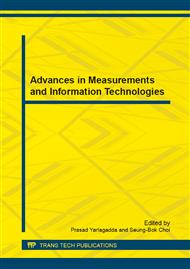p.480
p.489
p.496
p.502
p.506
p.512
p.517
p.522
p.526
Fuzzy Information Retrieval Method Based on Fuzzy-Valued Concept Networks
Abstract:
In order to reduce the time of fuzzy inference, the relevant matrices and the relationship matrices are used to constitute the fuzzy-valued concept networks. The elements of a relevant matrix represent the relevant degrees between concepts. The elements of a relationship matrix represent the relevant relationships between concepts. Fuzzy positive association relationship or fuzzy negative association relationship are used for formulating users queries in order to increase the flexibility of fuzzy information retrieval systems. Expanding the fuzzy-valued concept network architecture to the Internet environment, we propose a fuzzy information retrieval method based on the network-type fuzzy-valued concept network and it can be relatively more effective information retrieval in the distributed network
Info:
Periodical:
Pages:
506-511
Citation:
Online since:
February 2014
Authors:
Price:
Сopyright:
© 2014 Trans Tech Publications Ltd. All Rights Reserved
Share:
Citation:


